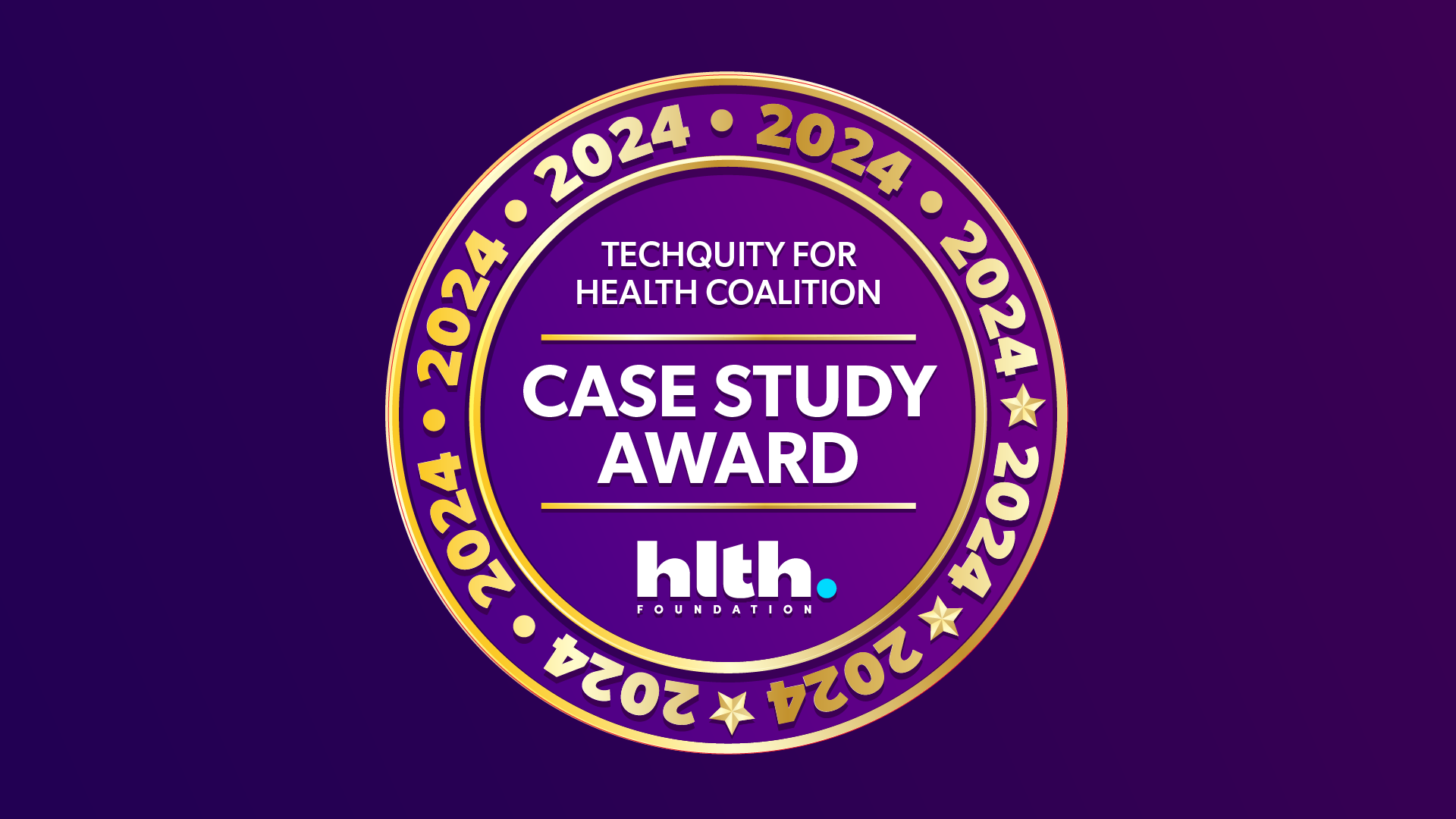Wednesday, Sep 23, 2020
COVID-19 Discussion with Dr. David Rhew

Dr. David C. RhewGlobal Chief Medical Officer, VP of Healthcare Worldwide Commercial, Microsoft

HLTH Team: Tell us about your work – and how Microsoft has responded to the COVID-19 pandemic.
Dr. Rhew: When COVID-19 was first reported in China and the infection began to spread quickly throughout other parts of Asia, Europe, and the United States, Microsoft engaged at an early stage to help healthcare organizations and governments worldwide respond to the crisis.
One example, heightened public concern along with a readily transmissible respiratory pathogen necessitated that health systems adjust their underlying processes for screening and triage. Providence, a large multi-state multi-hospital health system with significant presence in the greater Seattle region, applied an artificial intelligence (AI)-based “chat bot” technology developed by Microsoft to address the rising patient concerns about the virus. By asking a series of questions based on the latest Centers for Disease Control & Prevention (CDC) guidelines, the chat bot screened patients for COVID-19 symptoms and/or exposures. Patients with symptoms and/or exposures were subsequently directed to Providence’s telehealth portal for clinical evaluation and possible testing. The bot was facilitating successful and efficient population-level care coordination. This enabled high-risk and/or symptomatic patients to receive a timely remote clinical evaluation, without increasing the risk of virus transmission to other patients or extending the wait-times for those with symptoms. Since then, Microsoft has delivered the same chat bot technology for hospitals and governments across the globe. Today, more than 45 million people globally have been using this bot technology.
Early in the pandemic, we also saw hospitals and ICUs overflowing with COVID-19 patients, accompanied by critical shortages in personal protective equipment (PPE), lab testing kits, ICU beds, ventilators, trained critical care specialists, and medical treatments. In response, Microsoft launched and participated in collaborative efforts with partners across the healthcare ecosystem.
- One example was the collaboration between the American Hospital Association, Kaiser Permanente, Kearny, Merit Solutions, Microsoft, and UPS to launch Protecting People Everywhere, an initiative powered by the HealthEquip™ app through which PPE donors and their donations could be matched with potential recipients. The app ensured the equitable distribution of critical PPE and other medical supplies to the places they were needed most.
- In another example, GE Healthcare and Microsoft joined forces to help critical care specialists do more with their resource constraints by developing and launching a virtual ICU solution called Mural™. The Mural™ Virtual Care Solution is hosted on Microsoft Azure and integrates several disparate critical-care data sources (electronic medical record (EMR), telemetry, ventilator, infusion management, etc.) into a single pane of glass, allowing for remote consultation of ICU patients at scale.
- Microsoft applied its chat bot to facilitate the donation of convalescent plasma from those who had recovered from the illness as part of the “The Fight Is In Us” Campaign. The plasma will be used to help find a potential treatment for COVID-19.
Our teams also collaborated with Adaptive Biotechnologies to launch ImmuneCODE which is sharing one of the largest, most detailed views of the immune response to COVID-19 based on de-identified data generated from thousands of COVID-19 blood samples from patients around the globe. Information from ImmuneCODE will accelerate ongoing global efforts to develop better diagnostics, vaccines and therapeutics for COVID-19.
Technology has played an important role in helping to battle the pandemic, and Microsoft will continue to lean in to support efforts where technology can make a difference.
HLTH Team: What’s surprised you most about the response to COVID-19? What has Microsoft done to help customers push forward in new and different ways?
Dr. Rhew: One of the most notable changes that emerged as a result of the pandemic was the rapid and large-scale adoption of virtual health. The passage of the Coronavirus Aid Relief and Economic Security Act (CARES Act), which provided funds through the Federal Communications Commission’s (FCC’s) telehealth grants program, along with subsequent federal actions to lift technology and reimbursement restrictions previously placed on virtual interventions, were key drivers in fostering the rapid adoption of telehealth services.
St. Luke’s University Health Network (SLUHN) provided a prime example of how hospitals were dramatically shifting their ambulatory practices towards a virtual care model. SLUHN, a large regional health system encompassing multiple counties across two-states, introduced and adopted telehealth using Microsoft Teams™ as its virtual care platform. In a matter of days, the health system trained thousands of staff and providers to conduct, document, and schedule virtual visits – fundamentally altering its healthcare-delivery apparatus. Using the platform, they now schedule and evaluate thousands of patients daily.
Recognizing that technology has a role to play in accelerating progress for solutions to the pandemic and other pressing healthcare concerns and challenges, Microsoft accelerated its efforts to develop and launch the Microsoft Cloud for Healthcare. The Microsoft Cloud for Healthcare brings together trusted and integrated capabilities for customers and partners that enrich patient engagement and connects health teams to help improve collaboration, decision-making, and operational efficiencies.
HLTH Team: I understand you worked in infectious disease research early in your career—how has that work informed or prepared you to understand and meet the needs of healthcare providers?
Dr. Rhew: Infectious diseases is one of the few specialties in medicine that balances the needs of the patient along with the needs of the community and society. Just as important as prescribing the right antibiotic is knowing when not to prescribe it or when to stop it. As I reflect upon my days as an AIDS physician and researcher, my responsibility was to treat the patient, study the disease, promote education and prevention, and constantly assess the community-resistance patterns of HIV and other infectious agents to the latest antibiotics.
Today, with COVID-19, we are faced with a similar but broader-scale balancing act. Implementing public health measures to decrease the spread of infection and keep hospitals afloat, balanced against the impact that these measures may have on the economy, education, and people’s civil liberties.
Microsoft has taken a very thoughtful and principled approach as to how we as a company would respond to the pandemic. The heart of our response have been guiding principles to put people’s safety above all else as we worked to help our customers and protect our employees.
There’s been a lot of learnings through our efforts about best practices. Some of my personal learnings and best practices I’ll take forward include:
- Lead with empathy
- Lean on existing crisis management principles
- Move quickly and move together
- Listen to the experts
- Communicate frequently and transparently
HLTH Team: Can you tell us more about the work you’re doing that can transform our response to COVID-19; supporting re-opening and a phased approach to recovery?
Dr. Rhew: Microsoft, along with its partners, have been working on a variety of ways to help support businesses. Those areas span facilities and workforce preparation, management and operations. Microsoft provides Power Platform™ technologies that organizations can use and customize to address all of these areas to meet their needs.
However, for others looking for a fully managed service, our partners have developed programs using Microsoft technology. For example, one of those partners is United Health Group (UHG) and the program is called ProtectWell™. The core components of ProtectWell include: an employee mobile app for self-attestation; employer app to enable facility check-in; and closed-loop COVID-19 lab testing in coordination with major lab testing sites such as LabCorp and Quest. The program started with UHG and Optum employees. Since then, UHG has offered the program at no charge through the end of the year to U.S. healthcare organizations, businesses, or universities.
HLTH Team: What’s next for you? For Microsoft? Where do you see us in 6 mos or a year in relation to COVID-19?
Dr. Rhew: A primary area of focus for us at Microsoft will involve exploring how healthcare can be made easier, smarter, and more efficient for patients and providers. Microsoft Cloud for Healthcare, an end-to-end healthcare specific platform, will serve as our vehicle to help achieve this goal. In May 2020, we announced the availability of the public preview of Microsoft Cloud for Healthcare. Through the public preview, we’re working closely with partners across the healthcare ecosystem on key use cases, to facilitate integrations into existing platforms and systems of record, to streamline the workflows, and to ultimately deliver better experiences, better insights, and better outcomes.
With respect to COVID-19, we will continue to lean in to help, focusing on helping everyone get back to their places of work or school, which includes our recently launched initiative to help 25 million people worldwide acquire the digital skills needed in a COVID-19 economy.
About Dr. David Rhew:
Dr. David C. Rhew is the Global Chief Medical Officer (CMO) and Vice-President (VP) of Healthcare for Microsoft. He is the Chairman of the Health and Fitness Technology Division for the Consumer Technology Association and serves on CTA’s Board of Industry Leaders. He co-holds six U.S. technology patents that enable authoring, mapping, and integration of clinical decision support into the electronic health record. David is currently an Adjunct Professor at the Stanford University School of Medicine.
You May Also Enjoy

Thursday, Aug 4, 2022
Overcoming Orthodoxy in Medical Education


David Nash, MD, MBA
David W. Johnson

Monday, Jul 31, 2023
Closing Gaps in Community-based Health Equity
Michele Miller
Dan Desmond

Tuesday, Feb 27, 2024
First Techquity for Health Case Study Competition Winners Announced: A Groundswell of Action on Health Equity